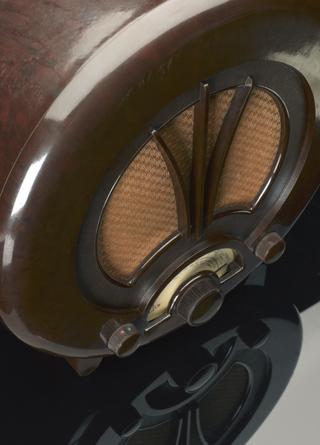
Liquid-filled Plastic Lens Television Magnifier, 1935-1965
- Made:
- 1935-1965 in United Kingdom
- maker:
- Lumex






'Standlens' liquid-filled plastic lens for magnifying a television picture, mounted on adjustable wooden stand, probably made by Lumex, probably British, 1935-1965.
When commercially produced televisions first became popular in the 1950s one of the drawbacks was that the size of the screen was limited by the technology. One solution was to use a magnifying lens to make the on-screen images bigger. The lenses were usually filled with oil or water. Sometimes they would be mounted in a stand, as in this example, other examples were directly mounted on the television set.
Details
- Category:
- Radio Communication
- Object Number:
- 1986-733
- Materials:
- plastic (unidentified), liquid, wood (unidentified) and rubber (unidentified)
- Measurements:
-
overall: 955 mm x 680 mm x 260 mm, 16 kg
- type:
- magnifying lens
- credit:
- Donated by M. J. Tatham




